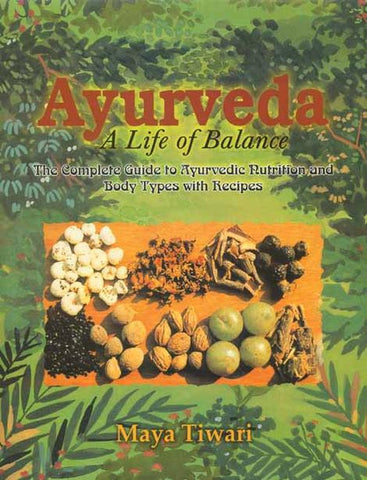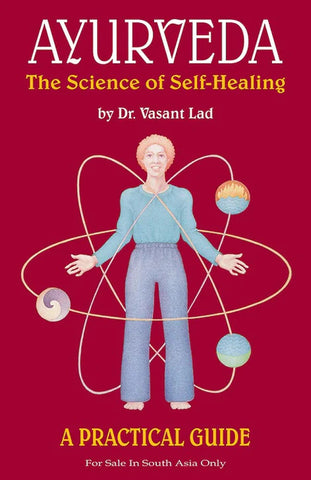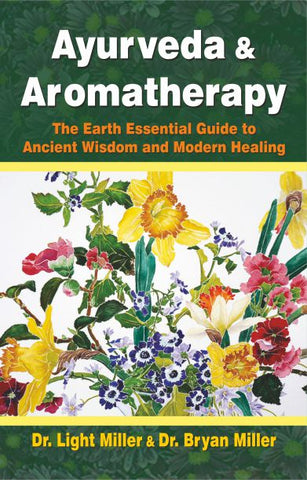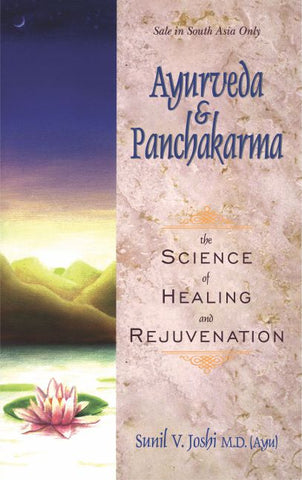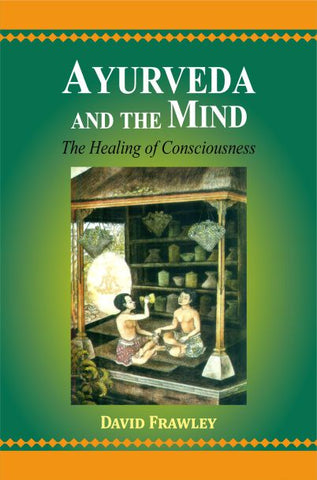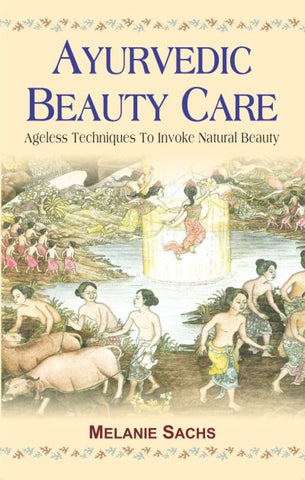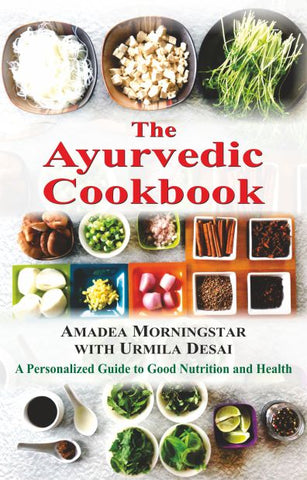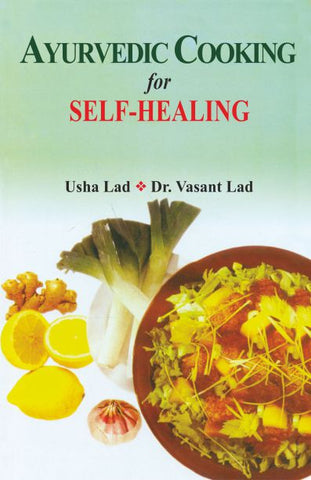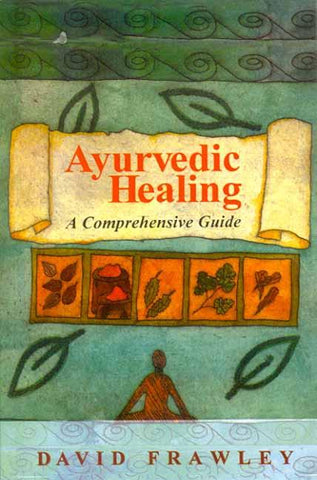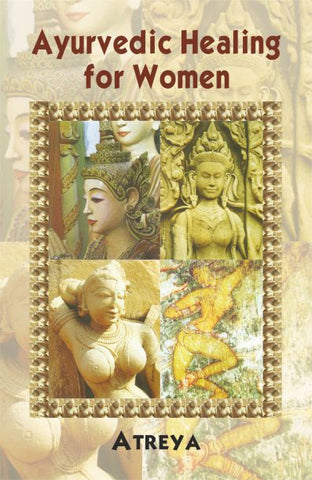Your cart is empty now.
The Caraka Samhita stands at the top of the ancient texts representing the School of Medicine in Ayurveda founded by the great Scholar-Sage Punarvasu Atreya. Its value is further enhanced by the fact that it is the only text available in a complete form where as other contemporary Samhitas such as Jatukarna, parasara etc. perished, that of Bhela is incomplete and that of Harita is dragged into the controversy. Thus any scholar desirous to know about the fundamentals of Ayurveda and its approach to life, health and disease has essentially to take resort to the study of this text unique in depth and divergence. It is rightly said, "Whatever is not here can't be found anywhere else."
Historically too, it is quite interesting. Like an archaeological edifice. If it is dug into one would come across three distinct strata of authorship ascribed to Agnivesa, Caraka and Drhabala in successive order.
This immensely valuable text needed since long a faithful and simple translation into English communicating the ideas as they are without divulging dogmatic details, which makes the situation worse particularly for a young scholar. This comes from the pen of an erudite scholar of Ayurveda who has devoted the major part of his life in studying the text intensively from various angles and has command over both the languages concerned.
About the Author
Prof. P.V. Sharma, the editor-translator of this text, is well known for his valuable contributions to the field of Ayurveda. During the last four decades, he has written on various aspects of Ayurveda-literary as well as scientific, conceptual as well as historical.
Born on 1st November 1920 in a small village (Mustafapur) near Patna, the ancient Pataliputra, in the family of traditional Vaidyas. School career in Vedarata Vidyalaya at the home village. University career in Ayurvedic College of Banaras Hindu University. Graduated in Ayurveda in 1940. Also did M.A. in Sanskrit and Hindi and Acharya in Sanskrit Sahitya later on.
My teaching career started in 1946 as Professor and alter Vice-Principal in Ayurvedic College, Begusarai (Bihar). In 1953 appointed, as lecturer in Ayurvedic College, B.H.U., in 1956 took over as Principal, Govt. Ayurvedic College, Patna and Superintendent Indigenous Medicines Bihar. In 1960 appointed as Dy. Director of Health Services (I.M.), Bihar. In 1963 joined as Professor of Dravyaguna in P.G. Institute of Indian Medicine, B.H.U., and also worked as officer-in-charge and later as Director of the Institute and Dean, of Faculty of Indian Medicine.
Prof. Sharma has been participating in international conferences on human sciences and has been associated with several committees on Ayurveda at the National level. He has authored about two dozen books and has published about 300 papers and articles. He has also edited a number of Sanskrit Medical Manuscripts which were hitherto unknown in the Ayurvedic world.
1. THE SCHOOL OF ATREYA
Ayurveda (the science of life) is one of the branches of the Vedas. It is regarded as upaveda of Rgveda or Atharva-veda but, really speaking, it is a stream of knowledge coming down from generation to generation since eternity parallel to the Vedic literature which is why its emergence has been said to be from the Creator (Brahma) Himself prior to the creation. It is taken as eternal because nobody knows when it was not there. All this shows its long tradition and deep attachment to the Indian culture.
As the knowledge advanced gradually, Ayurveda was divided into eight spe- cities-Kayacikitsa (internal medicine), Salya (surgery), Salakya (pertaining to diseases of supra-clavicular region), Kaumarabhrtya (pediatrics including obstet- rics and gynaecology,) Agadatantra (toxicology), Bhutavidya (pertaining to micro- organisms or spirits), Rasayana (promotive therapy) and Vajikarana (pertaining to aphrodisiacs). A number of treatises were composed on each branch making all of them full-fledged specialities but at the same time keeping room for inter-discipli- nary approach and coordination. Out of them, two specialities developed to greater extent making two distinct schools-one the school of medicine and the other the school of surgery. The former was known as Kayacikitsa, Atreya or Paunarvasa sampradaya and the latter as Salya or Dhanvantara sampradaya.
According to the narrative given in the Caraka Samhita, the tradition of Ayurveda started right from Brahma and passed through Daksa Prajapati and Indra to Bharadwaja (C.Su. 1. 4-27) or Arti (C.Ci. 1.4.3) who handed it down to Atreya, It shows that the tradition upto Indra was a divine one and it was Bharadwaja or Arti who brought it to the terrestrial level. Atreya discussed the topics of medicine with the scholar-sages in different symposia organised in vari- ous parts of the country and formulated the basic concepts accordingly. He had six illustrious disciples-Agnivesa, Bhela, Jatukarna, ParasaraHarita and Ksarapani, Of them Agnivesa was the most brilliant one who documented the precepts of his teacher faithfully in his compendium known as Agnivesa-tantra (Agnivesa's treatise). The other disciples followed him and composed their own compendia but the Agnivesa-tantra was always the most popular text representing the School of Atreya (or medicine). Afterwards it was refined and enlarged by Caraka when it began to be known as the Caraka-samhita though the original treatise of Agnivesa also continued to exist for a long period as seen by its quotations found in several commentaries. The Caraka-samhita was once again redacted by a Kashmirian scholar, Drdhabala. The present text of the Caraka-samhita read all over the world today is the Agnivesa-tantra as refined by Caraka and later redacted by Drdhabala. Physicians of the School of Atreya referred the surgical cases to surgeons belonging to the School of Dhanwantari, but there is no evidence of referring the medical cases by the above surgeons to the physicians of the School of Atreya. It seems that only the clear surgical cases went to the surgeons who were able to manage certain medical conditions too arisen as complications in those cases that is why in the Susruta Samhita treatment of various medical conditions is also described.
2. DATE OF THE CARAKA-SAMHITA
Keeping in view the initial composition and further two redactions the present text of the Caraka-samhita can be analysed into three distinct layers which would naturally relate to three different times. It would be futile and baseless if some- body attempts to decide the date of the Caraka-samhita as such. The safest course would be to discuss the dates of Atreya (the senior contemporary of Agnivesa), Caraka and Drdhabala which would throw light on development of the Caraka- samhita through different phases, the first one denoting the initial composition and the last one the latest handling of the text.
ATREYA-AGNIVESA
Bhagawan Punarvasu Atreya is the pivotal figure in the Caraka-samhita. His concepts are elaborated either in the form of dialogue with his favorite disciple, Agnivesa, or while concluding the discussions as chairman in symposia.
Whether Atreya received the tradition of Ayurveda from the sage Bharadwaja or his father Atri is a common question. In the Sutrasthana of the Caraka-samhita it is said that the sages received the teachings from Bharadwaja (C.Su. 1.27). Here the particular name of Atreya is conspicuously absent while in the other context (C.Cu. 1.4.3) the name of Bharadwaja is not included in the list of sages who approached Indra. The latter version is also corroborated by the Kasyapa- samhita (p.61). Moreover, Bharadwaja is seen in oppoition to Atreya in one of the symposia. Hence it seems more logical that Atreya received his training in Ayurveda from his father Atri. In the upanisads too a number of instances of sons receiving instructions from their fathers are found.
Apart from Punarvasu Atreya two other Atreyas with different adjectives such as Krsnatreya and Bhiksu Atreya are seen in the Caraka-samhita. Krsnatreya is mentioned once in the concluding verses (C.Su. 11.63) in the Caraka-samhita and at two or three places in the Bhela Samhita. In Mahabharata too, Krsnatreya -is said as founder of the medical school. All this shows that 'Krsna' was another name of Atreya in addition to that based on the name of a star (Punarvasu) at the constellation of which perhaps he was born. But Krsnatreva auoted in the com- mentaries of Cakrapani, Indu, Srikanthadatta and Sivadasa Sen etc. as specialist of Salakya (Supra-clavicular diseases) is definitely a different person.
Bhiksu Atreya also seems to be different from Punarvasu Atreya because in one of the symposia (C.Sii. 25.24-25) Punarvasu Atreya.has contradicted his views. He may be some person coming from the Atreya clan but later on adopting non- vedic (Buddhist) views.
There is mention of one Atreya who was connected with the Taksasila University and was teacher of the illustrious surgeon Jivaka. He also seems to be different person expert in surgery whereas Punarvasu was an expert in medicine. There is no mention at all of Taksasila in the Caraka samhita. Had Arreya been connected with the same, it would have been mentioned certainly in some place or the other.
Atreya is referred to somewhere by epithets 'Candrabhagi or 'Candrabhaga which is interpreted either as the name of his mother (Candrabhaga) or the place covered by the river Candrabhaga (modern Chamba in Himachal Pradesh).
1. Agnivesa was the foremost among the disciples of Atreya and the author of the Agnivesa-tantra. Agnivesa is mentioned in Sangaravadi (4.1.71), Aswadi (4.1.70), Gargadi (4.1.105) and Tikakitavadi (2.4.68) Ganas of Panini's Astadhyayi. Goldstucker has fixed 7th cent B.C. as the date of Panini. As Agnivesa is mentioned in more than one ganas it is evident that he existed long back and became a historical figure by the time of Panini.
2. In the Caraka-samhita, Ayurveda is said to be intimately connected with Atharvaveda. It shows that the School of Atreya was founded after the Atharvaveda rationalising its tradition. The date of Atharvaveda is fixed as 1500 B.C. on the basis of the reference of Pariksita in the Atharvaveda and interval of 1015 years or 1115 years between the time of Pariksita and Nanda, the emperor of Magadha. On the basis of these points the date of Atreya may be fixed before Panini (7th Cent. B.C.) and after the Atharvaveda (1500 B.C.) e.g. near-about 1000 B.C.
CARAKA
On the second stratum stands Caraka who was the first man to refine the treatise of Agnivesa thoroughly and enlarge it with his interpretations and annotations. His contributions in this respect were so spectacular that the original treatise in its new form began to be known on the name of Caraka himself instead of the original author: The original Agnivesa-tantra in brief (Sutra) style was enlarged' with his annotations (Bhasya) by Caraka. Thus Caraka was the Bhasyakara of AgniVesa's work as was Patanjali for the Astadhyayi of Panini. That is why no wonder that Caraka has been identified as Patanjali, the author of Yogasutra and Mahabhasya.
Was Caraka an individual or a traditional group? Some scholars opine that Caraka was one of the branches of black Yajurveda and the persons following this branch formed a sect known as Caraka. Thus perhaps Caraka, the annotator of the Caraka-samhita, was a person belonging to that sect. There was also a branch of Atharvaveda known as 'Vaidyacarana', now extinct, which was perhaps more intimately connected with the tradition of vaidyas who served the masses while moving from village to village. This very mobile character (Carana) might have been responsible for the nomenclature 'Caraka'. This is supported by the theme of the Caraka-samhita which is based on movement of the scene of activities from one place to another. Bhavamisra has said that Caraka was the incarnation of Sesa (Naga) which is based, on one hand, on the identity of Caraka and Patanjali and, on the other hand, gave rise to speculations that Caraka belonged to the sect of Nagas who at one time were very powerful and established their footholds in several parts of the country.
Sylvan Levi, on the basis of the Chineses version of the Buddhist Tripitaka, has established that Caraka was the royal physician of the Emperor Kaniska who belonged to 1st or 2nd Cent. A.D. but on the internal evidences it does not stand. Kaniska was a staunch Buddhist and the scholars attached to him like Aswaghosa, Nagarjuna etc. were all Buddhists while Caraka shows his faith in vedas, brahmanism and positivism. Moreover, it looks improbable that a freely moving mendicant like Caraka might have accepted the bondage of a royal court. Hence Caraka, the annotator of the Caraka-samhita, can't be the same person as the royal physician of Kaniska. It is possible that the name 'Caraka' being popular at one time was given to more than one person. Asvaghosa, the poet laureate attached to Kaniska has not mentioned the name of Caraka though he has said Atreya as the propounder of the School of Medicine. Had Caraka been his colleague he must have mentioned him. Lastly, this information found only in the Chinese version can't be taken as authority for establishing a historical fact.
| 1. SUTRASTHANAM (Section on fundamentals) |
|
| CHAPTER I - On Longevity | 3 |
| CHAPTER II - On Seeds of Apamarga etc. | 15 |
| CHAPTER III - On Aragvadha etc. | 19 |
| CHAPTER IV - On location of six hundred evacuatives | 23 |
| CHAPTER V - On quantity of diet etc. | 32 |
| CHAPTER VI - On One's diet etc. | 42 |
| CHAPTER VII - On non-suppression of urges etc. | 47 |
| CHAPTER VIII - On introductory description of sense organs | 54 |
| CHAPTER IX - On Small quadruple | 62 |
| CHAPTER X - On great quadruple | 65 |
| CHAPTER XI - On three desires etc. | 69 |
| CHAPTER XII - On merits and demerits of Vata etc. | 81 |
| CHAPTER XIII - On unction | 86 |
| CHAPTER XIV - On fomentation | 95 |
| CHAPTER XV - On arrangement of equipments etc. | 103 |
| CHAPTER XVI - On the physician equipped for treatment etc. | 111 |
| CHAPTER XVII - On the number of head disease etc. | 115 |
| CHAPTER XVIII - On three swellings etc. | 125 |
| CHAPTER XIX - On eight abdominal diseases etc. | 132 |
| CHAPTER XX - On major diseases | 137 |
| CHAPTER XXI - On the eight despicables etc. | 144 |
| CHAPTER XXII - On reducing and promoting measures | 150 |
| CHAPTER XXIII - On over-saturation etc. | 154 |
| CHAPTER XXIV - On Properly formed blood etc. | 157 |
| CHAPTER XXV - On the origin of person etc. | 163 |
| CHAPTER XXVI - On the discussion among Atreya, Bhadrakapya etc. | 175 |
| CHAPTER XXVII - On the types of food and drinks | 193 |
| CHAPTER XXVIII - On various food and drinks etc. | 226 |
| CHAPTER XXIX - On ten seats of vital breath | 232 |
| CHAPTER XXX - On great vessels of heart etc. | 236 |
| 2. NIDANASTHANAM (Section on diagnosis) |
|
| CHAPTER I - On diagnosis of jwara (fewer) | 251 |
| CHAPTER II - On diagnois of Raktapitta (internal haemorrhage) | 259 |
| CHAPTER III - On diagnosis of gulma | 264 |
| CHAPTER IV - on diagnosis of premeha (Disorders of urine) | 269 |
| CHAPTER V - On diagnosis of kustha (Leprosy) | 276 |
| CHAPTER VI - On diagnosis of sosa (phthisis) | 281 |
| CHAPTER VII - On diagnosis of unmada (insanity) | 287 |
| CHAPTER VIII - On diagnosis of apasmara (epilepsy) | 293 |
| 3. VIMANASTHANAM (Section of specific features) |
|
| CHAPTER I - On specific features of Rasa | 301 |
| CHAPTER II - On specific features of threefold belly | 309 |
| CHAPTER III - On specific features of epidemics | 314 |
| CHAPTER IV - On specific features of the threefold sources of knowledge about disease characters | 325 |
| CHAPTER V - On specific features of srotas (channels) | 329 |
| CHAPTER VI - On Specific features of the groups of diseases | 334 |
| CHAPTER VII - On specific features of the diseased etc. | 340 |
| CHAPTER VIII - On specific features of therapeutics of diseases | 350 |
| 4. SARIRASTHANAM (Section on study of human body) |
|
| CHAPTER I - On the types of personal self etc. | 398 |
| CHAPTER II - Beginning with 'Different Clan' | 412 |
| CHAPTER III - On Descent of embryo | 419 |
| CHAPTER IV - On development of foetus | 428 |
| CHAPTER V - On detailed knowledge about the person | 440 |
| CHAPTER VI - On detailed knowledge of human body | 446 |
| CHAPTER VII - On Enumeration of body parts | 455 |
| CHAPTER VIII - On principles of procreation | 461 |
| 5. INDRIYASTHANAM (Section on the signs of life and death) |
|
| CHAPTER I - On complexion and voice | 491 |
| CHAPTER II - On flowered person | 496 |
| CHAPTER III - On palpable entities | 498 |
| CHAPTER IV - On sense organs | 500 |
| CHAPTER V - On prodromal signs | 503 |
| CHAPTER VI - On physical adnormalities | 507 |
| CHAPTER VII - On shadow and lustre | 509 |
| CHAPTER VIII - Certain fatal conditions relating to eyes, nose , teeth etc. | 411 |
| CHAPTER IX - On Blackish sign etc. | 515 |
| CHAPTER X - On sign of sudden death | 518 |
| CHAPTER XI - On poor digestion etc. | 520 |
| CHAPTER XII - On cowdung like power etc. | 523 |
| 6. CIKITSASTHANAM (Section on therapeutics) |
|
| CHAPTER I - On Rasayana (promotive treatment) | 3 |
| CHAPTER II - On Vajikarana (aphrodistiac treatment) | 35 |
| CHAPTER III - On treatment of Jwara (fewer) | 52 |
| CHAPTER IV - On treatment of rakta-pitta (internal haemorrhage) | 86 |
| CHAPTER V - On treatment of gulma (abdominal lump) | 98 |
| CHAPTER VI - On treatment of Prameha | 117 |
| CHAPTER VII - On treatment of Kustha (Leprosy and other skin disorders) | 125 |
| CHAPTER VIII - On treatment of Rajayaksma (Phthisis) | 143 |
| CHAPTER IX - On treatment of unmada (Insanity) | 160 |
| CHAPTER X - On treatment of a apasmara (epilepsy) | 172 |
| CHAPTER XI - On treatment of Ksata-Krina (wounded in chest and wasted) | 178 |
| CHAPTER XII - On treatment of Svayathu (swelling) | 188 |
| CHAPTER XIII - On treatment of Udara (Abdorminal diseases) | 204 |
| CHAPTER XIV - On treatment of arsa (piles) | 224 |
| CHPATER XV - On treatment of Grahani disorder | 249 |
| CHAPTER XVI - On treatment of Pandu roga (anaemia) | 272 |
| CHAPTER XVII - On treatment of Hikka (Hiccup) and Svasa (Dyspnoea) | 286 |
| CHAPTER XVIII - On treatment of Kasa (cough) | 301 |
| CHAPTER XIX - On treatment of Atisara (Diarrhoea) | 320 |
| CAHPTER XX - On treatment of Chardi (Vomiting) | 335 |
| CHAPTER XXI - On treatment of Visarpa (Erysipelas) | 342 |
| CHAPTER XXII - On treatment of Trsna (Polydipsia) | 358 |
| CHAPTER XXIII - On treatment of Visa (Poisoning) | 364 |
| CHAPTER XXIV - On treatment of madatyaya (alcoholism) | 390 |
| CHAPTER XXV - On treatment of two types of vrans (wound) | 409 |
| CHAPTER XXVI - On treatment of the disorders of Three vital organs | 420 |
| CHAPTER XXVII - On treatment of Urustambha. | 456 |
| CHAPTER XXVIII - On treatment of Vatavyadhi. | 461 |
| CHAPTER XXIX - On treatment of Vatarakta | 486 |
| CHAPTER XXX - On treatment of yonivyapat (disorders of female genital tract) | 502 |
| 7. KALPASTHANAM (Section on Pharmaceuticals) |
|
| CHAPTER I - On Pharmaceutical peparations of Madana | 537 |
| CHAPTER II - On Pharmaceutical prepartions of Jimuta | 545 |
| CHAPTER III - On Pharmaceutical preparations of Iksvaku | 547 |
| CHAPTER IV - On Pharmaceutical preparations of Dhamargava | 550 |
| CHAPTER V - On Pharmaceutical preparation of Vatsaka | 552 |
| CHAPTER VI - On pharmaceutical preparations of Krtavedhana | 554 |
| CHAPTER VII - On Pharmaceutical preparations of Syama and trivrt | 556 |
| CHAPTER VIII - On pharmaceutical preparations of caturangula | 564 |
| CHAPTER IX - On pharmaceutical preparations of Trivaka | 566 |
| CHAPTER X - On Pharmaceutical preparations of Sudha (snuhi) | 568 |
| CHAPTER XI - On Pharmaceutical preparations of Saptala and Sankhini | 570 |
| CHAPTER XII - On Pharmaceutical preparations of Danti and Dravanti | 572 |
| SIDDHISTHANAM (Section on Successful management) |
|
| CHAPTER I - On successful preparation | 587 |
| CHAPTER II - On successful Management of pancakarma | 596 |
| CHAPTER III - On Principles of successful (application of) enemation | 605 |
| CHAPTER IV - On Successful management of unctuous enema | 615 |
| CHAPTER V - On Successful management of the complication of nozzle and enema pouch | 620 |
| CHAPTER VI - On Successful management of the complication of emasis and purgation | 623 |
| CHAPTER VII - On successful management of the complications of enema | 632 |
| CHAPTER VIII - On Successful management with formulations in terms of prasna (80 gm) | 639 |
| CHAPTER IX - On Successful management of the (disorders related to) three vital parts | 644 |
| CHAPTER X - On Successful application of basti (enemas) | 658 |
| CHAPTER XI - On Successful dose of (the enema prepared with) fruits | 662 |
| CHAPTER XII - On Successful management of post-enematic conditions | 668 |
| APPENDICES | 685 |
1. THE SCHOOL OF ATREYA
Ayurveda (the science of life) is one of the branches of the Vedas. It is regarded as upaveda of Rgveda or Atharva-veda but, really speaking, it is a stream of the knowledge coming down from generation to generation since enternity parallel to the vedic literature that is why its emergence has been said to be from the Creator (Brahma) Himself prior to the creation. It is taken as eternal because nobody knows when it was not there. All this shows its long tradition and deep attachment to the Indian culture.
As the knowledge advanced gradually, Ayurveda was divided into eight spe- cialities-Kayacikitsa (internal medicine), Salya (surgery), Salakya (pertaining to diseases of supra-clavicular region), Kaumarabhrtya (pediatrics including obstet- rics and gynaecology,) Agadatantra (toxicology), Bhutavidya (pertaining to micro- organisms or spirits), Rasayana (promotive therapy) and Vajikarana (pertaining to aphrodisiacs). A number of treatises were composed on each branch making all of them full-fledged specialities but at the same time keeping room for inter-discipli- nary approach and coordination. Out of them, two specialities developed to greater extent making two distinct schools-one the school of medicine and the other the school of surgery. The former was known as Kayacikitsa, Atreya or Paunarvasa sampradaya and the latter as Salya or Dhanvantara sampradaya.
According to the narrative given in the Caraka Samhita, the tradition of Ayurveda started right from Brahma and passed through Daksa Prajapati and Indra to Bharadwaja (C.Su. 1. 4-27) or Arti (C.Ci. 1.4.3) who handed it down to Atreya, It shows that the tradition upto Indra was a divine one and it was Bharadwaja or Arti who brought it to the terrestrial level. Atreya discussed the topics of medicine with the scholar-sages in different symposia organised in vari- ous parts of the country and formulated the basic concepts accordingly. He had six illustrious disciples-Agnivesa, Bhela, Jatukarna, ParasaraHarita and Ksarapani, Of them Agnivesa was the most brilliant one who documented the precepts of his teacher faithfully in his compendium known as Agnivesa-tantra (Agnivesa's treatise). The other disciples followed him and composed their own compendia but the Agnivesa-tantra was always the most popular text representing the School of Atreya (or medicine). Afterwards it was refined and enlarged by Caraka when it began to be known as the Caraka-samhita though the original treatise of Agnivesa also continued to exist for a long period as seen by its quotations found in several commentaries. The Caraka-samhita was once again redacted by a Kashmirian scholar, Drdhabala. The present text of the Caraka-samhita read all over the world today is the Agnivesa-tantra as refined by Caraka and later redacted by Drdhabala. Physicians of the School of Atreya referred the surgical cases to surgeons belonging to the School of Dhanwantari, but there is no evidence of referring the medical cases by the above surgeons to the physicians of the School of Atreya. It seems that only the clear surgical cases went to the surgeons who were able to manage certain medical conditions too arisen as complications in those cases that is why in the Susruta Samhita treatment of various medical conditions are also described.
2. DATE OF THE CARAKA-SAMHITA
Keeping in view the initial composition and further two redactions the present text of the Caraka-samhita can be analysed into three distinct layers which would naturally relate to three different times. It would be futile and baseless if some- body attempts to decide the date of the Caraka-samhita as such. The safest course would be to discuss the dates of Atreya (the senior contemporary of Agnivesa), Caraka and Drdhabala which would throw light on development of the Caraka- samhita through different phases, the first one denoting the initial composition and the last one the latest handling of the text.
ATREYA-AGNIVESA
Bhagawan Punarvasu Atreya is the pivotal figure in the Caraka-samhita. His concepts are elaborated either in the form of dialogue with his favorite disciple, Agnivesa, or while concluding the discussions as chairman in symposia.
Whether Atreya received the tradition of Ayurveda from the sage Bharadwaja or his father Atri is a common question. In the Sutrasthana of the Caraka-samhita it is said that the sages received the teachings from Bharadwaja (C.Su. 1.27). Here the particular name of Atreya is conspicuously absent while in the other context (C.Cu. 1.4.3) the name of Bharadwaja is not included in the list of sages who approached Indra. The latter version is also corroborated by the Kasyapa- samhita (p.61). Moreover, Bharadwaja is seen in oppoition to Atreya in one of the symposia. Hence it seems more logical that Atreya received his training in Ayurveda from his father Atri. In the upanisads too a number of instances of sons receiving instructions from their fathers are found.
Apart from Punarvasu Atreya two other Atreyas with different adjectives such as Krsnatreya and Bhiksu Atreya are seen in the Caraka-samhita. Krsnatreya is mentioned once in the concluding verses (C.Su. 11.63) in the Caraka-samhita and at two or three places in the Bhela Samhita. In Mahabharata too, Krsnatreya -is said as founder of the medical school. All this shows that 'Krsna' was another name of Atreya in addition to that based on the name of a star (Punarvasu) at the constellation of which perhaps he was born. But Krsnatreva auoted in the com- mentaries of Cakrapani, Indu, Srikanthadatta and Sivadasa Sen etc. as specialist of Salakya (Supra-clavicular diseases) is definitely a different person.
Bhiksu Atreya also seems to be different from Punarvasu Atreya because in one of the symposia (C.Sii. 25.24-25) Punarvasu Atreya.has contradicted his views. He may be some person coming from the Atreya clan but later on adopting non- vedic (Buddhist) views.
There is mention of one Atreya who was connected with the Taksasila University and was teacher of the illustrious surgeon Jivaka. He also seems to be different person expert in surgery whereas Punarvasu was an expert in medicine. There is no mention at all of Taksasila in the Caraka samhita. Had Arreya been connected with the same, it would have been mentioned certainly in some place or the other.
Atreya is referred to somewhere by epithets 'Candrabhagi or 'Candrabhaga which is interpreted either as the name of his mother (Candrabhaga) or the place covered by the river Candrabhaga (modern Chamba in Himachal Pradesh).
1. Agnivesa was the foremost among the disciples of Atreya and the author of the Agnivesa-tantra. Agnivesa is mentioned in Sangaravadi (4.1.71), Aswadi (4.1.70), Gargadi (4.1.105) and Tikakitavadi (2.4.68) Ganas of Panini's Astadhyayi. Goldstucker has fixed 7th cent B.C. as the date of Panini. As Agnivesa is mentioned in more than one ganas it is evident that he existed long back and became a historical figure by the time of Panini.
2. In the Caraka-samhita, Ayurveda is said to be intimately connected with Atharvaveda. It shows that the School of Atreya was founded after the Atharvaveda rationalising its tradition. The date of Atharvaveda is fixed as 1500 B.C. on the basis of the reference of Pariksita in the Atharvaveda and interval of 1015 years or 1115 years between the time of Pariksita and Nanda, the emperor of Magadha. On the basis of these points the date of Atreya may be fixed before Panini (7th Cent. B.C.) and after the Atharvaveda (1500 B.C.) e.g. near-about 1000 B.C.
CARAKA
On the second stratum stands Caraka who was the first man to refine the treatise of Agnivesa thoroughly and enlarge it with his interpretations and annotations. His contributions in this respect were so spectacular that the original treatise in its new form began to be known on the name of Caraka himself instead of the original author: The original Agnivesa-tantra in brief (Sutra) style was enlarged' with his annotations (Bhasya) by Caraka. Thus Caraka was the Bhasyakara of AgniVesa's work as was Patanjali for the Astadhyayi of Panini. That is why no wonder that Caraka has been identified as Patanjali, the author of Yogasutra and Mahabhasya.
Was Caraka an individual or a traditional group? Some scholars opine that Caraka was one of the branches of black Yajurveda and the persons following this branch formed a sect known as Caraka. Thus perhaps Caraka, the annotator of the Caraka-samhita, was a person belonging to that sect. There was also a branch of Atharvaveda known as 'Vaidyacarana', now extinct, which was perhaps more intimately connected with the tradition of vaidyas who served the masses while moving from village to village. This very mobile character (Carana) might have been responsible for the nomenclature 'Caraka'. This is supported by the theme of the Caraka-samhita which is based on movement of the scene of activities from one place to another. Bhavamisra has said that Caraka was the incarnation of Sesa (Naga) which is based, on one hand, on the identity of Caraka and Patanjali and, on the other hand, gave rise to speculations that Caraka belonged to the sect of Nagas who at one time were very powerful and established their footholds in several parts of the country.
Sylvan Levi, on the basis of the Chineses version of the Buddhist Tripitaka, has established that Caraka was the royal physician of the Emperor Kaniska who belonged to 1st or 2nd Cent. A.D. but on the internal evidences it does not stand. Kaniska was a staunch Buddhist and the scholars attached to him like Aswaghosa, Nagarjuna etc. were all Buddhists while Caraka shows his faith in vedas, brahmanism and positivism. Moreover, it looks improbable that a freely moving mendicant like Caraka might have accepted the bondage of a royal court. Hence Caraka, the annotator of the Caraka-samhita, can't be the same person as the royal physician of Kaniska. It is possible that the name 'Caraka' being popular at one time was given to more than one person. Asvaghosa, the poet laureate attached to Kaniska has not mentioned the name of Caraka though he has said Atreya as the propounder of the School of Medicine. Had Caraka been his colleague he must have mentioned him. Lastly, this information found only in the Chinese version can't be taken as authority for establishing a historical fact.
| 1. SUTRASTHANA | |
| Chapter 1 | 3 |
| Chapter 2 | 59 |
| Chapter 3 | 61 |
| Chapter 4 | 63 |
| Chapter 5 | 70 |
| Chapter 6 | 76 |
| Chapter 7 | 82 |
| Chapter 8 | 90 |
| Chapter 9 | 98 |
| Chapter 10 | 104 |
| Chapter 11 | 107 |
| Chapter 12 | 125 |
| Chapter 13 | 129 |
| Chapter 14 | 140 |
| Chapter 15 | 147 |
| Chapter 16 | 150 |
| Chapter 17 | 154 |
| Chapter 18 | 163 |
| Chapter 19 | 164 |
| Chapter 20 | 167 |
| Chapter 21 | 178 |
| Chapter 22 | 184 |
| Chapter 23 | 188 |
| Chapter 24 | 191 |
| Chapter 25 | 196 |
| Chapter 26 | 207 |
| Chapter 27 | 237 |
| Chapter 28 | 252 |
| Chapter 29 | 258 |
| Chapter 30 | 259 |
| 2. NIDANASTHANA | |
| Chapter 1 | 271 |
| Chapter 2 | 291 |
| Chapter 3 | 293 |
| Chapter 4 | 295 |
| Chapter 5 | 300 |
| Chapter 6 | 303 |
| Chapter 7 | 305 |
| Chapter 8 | 306 |
| 3. VIMANA STHANA | |
| Chapter 1 | 311 |
| Chapter 2 | 317 |
| Chapter 3 | 319 |
| Chapter 4 | 323 |
| Chapter 5 | 326 |
| Chapter 6 | 330 |
| Chapter 7 | 333 |
| Chapter 8 | 335 |
| 4. SARIRASTHANA | |
| Chapter 1 | 349 |
| Chapter 2 | 357 |
| Chapter 3 | 360 |
| Chapter 4 | 364 |
| Chapter 5 | 368 |
| Chapter 6 | 369 |
| Chapter 7 | 376 |
| Chapter 8 | 379 |
| 5. INDRIYASTHANA | |
| Chapter 1 | 387 |
| Chapter 2 | 390 |
| Chapter 3 | 392 |
| Chapter 4 | 393 |
| Chapter 5 | 395 |
| Chapter 6 | 397 |
| Chapter 7 | 399 |
| Chapter 8 | 401 |
| Chapter 9 | 402 |
| Chapter 10 | 403 |
| Chapter 11 | 404 |
| Chapter 12 | 406 |
It was in 1981 that the first volume of the Caraka-samhita was published. Now, in 1993, this fourth and the last volume is coming out. Thus it took more than a decade to complete the series. It is unnecessary to fix responisbility for the delay on one or the other, the only thing for which I crave indulgence of the readers who had to wait patiently for such a long time.
As informed in the preceding volume, a section on medicinal plants of the Caraka-samhita is being appended to the present volume. It contains discussion on plants based on the four comms. taken for study in the critical notes. The other aspects of discussion on identification have not been touched upon here for which the readers are advised to refer to the Appendix II of the vol. II and the author's Dravyagunavijnana, vol. V.
The main body of the text contains critical notes on the sections on cikitsa, kalpa and siddhi which are the back-bone of the Ayurvedic Medicine. The cikitsasthana of Caraka is said to be the best one ( Carakastu cikitsite ) in which principles of treatment and effective formulations in respect of a number of common diseases ale described. This has been done in a very systematic manner. In the context of every disease, at first, the principles of treatment are given on the lines of which the cases have to be dealt with. Then comes the wholesome diet ( pathya ) which occupies an important position in Ayurvedic medicine. Thereafter single drugs and compound formulations useful in the disease are given. Lastly comes the prayer to gods when the human endeaver fails. This scientific course of treatment is recognized and appreciated even in modern times. But the superiority of Ayurveda lies in its holistic approach which is covered by diet, drugs and activites (anna, ausadha and vlhara ) on the theory of tridosa. Caraka is so particular about the doses that he does not give any importance to the nomenclature of diseases.
Kalpasthana deals with the preparation of formulations useful in medicine. Besides, it mainly describes the common drugs used for vamana and virecana. Siddhisthana, as its title suggests, is very important because of dealing the topics concerned with pancakarma also known as samsodhana cikitsa. According to - . Ayurveda, Samsamana cikitsa must be preceded by samsodhana cikitsa because until unless vitiated dosas and malas are eliminated and the body is purified the desired result of the treatment may not be obtained. Secondly, if the above course is followed methodically the disease does not recur. In pancakarma consisting of vamana, virecana, asthapana, anuvasana and sirovirecana the physician has to be quite vigilant so that these interferences do not create any complications( vyapad ) and if arisen they are controlled effectively. Thus the word (siddhi) denotes prevention as well as management of the compicaions leading to the success in physician's effort. Ending of the text with the siddhisthana suggests successful achievement of both the objects of Ayurveda e.g. maintenance of positive health and alleviation of disorders. It also indicates successful completion of the text. The word 'siddhi' being auspicious it also wishes for all those who are engaged in the holy mission of amelioration of the sufferings of the Humanity.
The Caraka-samhita needs constant study with critical acumen and deep insight. The commentators have expressed their views which can be utilized as a fruitful and sound material for further study and research. I will feel satisfied in my ambition if readers get inspiration for such study.
Dr. S.D. Dube, Reader, Department of Dravyaguna, Faculty of Ayurveda, Banaras Hindu University has collaborated in preparing the portion on medicinal plants including the Appendix for which the author is highly thankful to him.
I am extremely grateful to all those who helped, in one way or the other, in fulfilling the gigantic task. I also wish to extend my heart-felt thanks to all the readers all over the globe who liked and patronized this edition during these years.
Thanks are also due to the publishers, Chaukhambha Orientalia, for completing the publication of the four-volume set of the Caraka-samhita, as planned, in spite of numerous difficulties.
| 1. CIKITSASTHANA | |
| Chapter 1 | 3 |
| Chapter 2 | 31 |
| Chapter 3 | 49 |
| Chapter 4 | 102 |
| Chapter 5 | 110 |
| Chapter 6 | 117 |
| Chapter 7 | 123 |
| Chapter 8 | 128 |
| Chapter 9 | 134 |
| Chapter 10 | 138 |
| Chapter 11 | 140 |
| Chapter 12 | 143 |
| Chapter 13 | 149 |
| Chapter 14 | 152 |
| Chapter 15 | 156 |
| Chapter 16 | 165 |
| Chapter 17 | 168 |
| Chapter 18 | 172 |
| Chapter 19 | 175 |
| Chapter 20 | 180 |
| Chapter 21 | 182 |
| Chapter 22 | 187 |
| Chapter 23 | 190 |
| Chapter 24 | 195 |
| Chapter 25 | 200 |
| Chapter 26 | 202 |
| Chapter 27 | 208 |
| Chapter 28 | 210 |
| Chapter 29 | 216 |
| Chapter 30 | 219 |
| 2. Kalpasthana | |
| Chapter 1 | 229 |
| Chapter 2 | 232 |
| Chapter 3 | 233 |
| Chapter 4 | 234 |
| Chapter 5 | 235 |
| Chapter 6 | 236 |
| Chapter 7 | 237 |
| Chapter 8 | 239 |
| Chapter 9 | 240 |
| Chapter 10 | 241 |
| Chapter 11 | 242 |
| Chapter 12 | 243 |
| 3. SIDHISTHANA | |
| Chapter 1 | 249 |
| Chapter 2 | 254 |
| Chapter 3 | 256 |
| Chapter 4 | 259 |
| Chapter 5 | 261 |
| Chapter 6 | 262 |
| Chapter 7 | 265 |
| Chapter 8 | 267 |
| Chapter 9 | 269 |
| Chapter 10 | 272 |
| Chapter 11 | 273 |
| Chapter 12 | 274 |
| Medicinal Plants in the Caraka-Samhita | 287 |
| Appendix | 1 |
| Index | 101 |
Delivery and Shipping Policy
- INTERNATIONAL SHIPPING
- Rs.1000-1100/kg
- ESTD. Delivery Time: 2-3 weeks (depending on location)
- Bubble Wrapped with Extra Padding
- NATIONAL SHIPPING
- NCR: Rs. 30/half kg
- Standard: Rs. 80/half kg
- Express shipments also available on Request
- ESTD. Delivery Time: Ranging from 1-4 days up to 7 business days (Depending on your choice of Delivery)
- TRACKING
- All orders; national or international, will be provided with a Tracking ID to check the status of their respective orders
- Depending on the Shipping Service, Tracking ID may be used on their respective tracking portals
Frequently Asked Questions (FAQs)
Domestic Shipping: 3-4 Days (after shipping)
International Shipping: 1-2 weeks (based on your location)
You will receive an email once your order has been shipped or you can email us if you didn't receive tracking details (info@mlbd.co.in)
Every book that we sell is the latest edition except all the rare books
Yes, we do provide free shipping, only on domestic orders (within India) above Rs.1500







